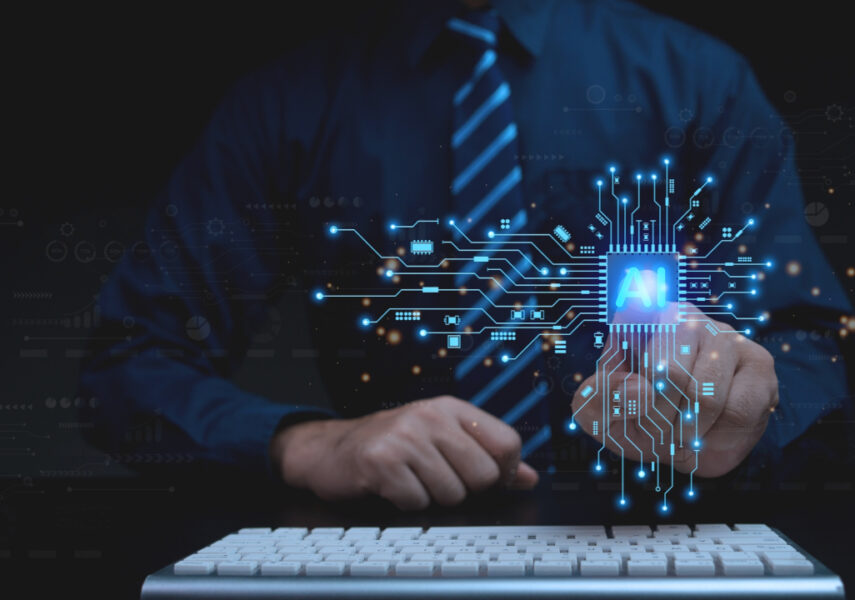While cybersecurity and compliance with regulations become the main two topics for company boards, some firms are hiring cybersecurity specialists to investigate cybersecurity issues.
Bringing a cybersecurity specialist straight away to the board is only one of eight Crunch cybersecurity trends for 2022, the majority of which are being triggered by latest events like data leakage and the COVID-19 pandemic.
Our experts believe that the strategy of a conventional enterprise radically changed due to above mentioned events. As new standards emerge, it is crucial to have a good-working defence strategy that would support the business while these changes happen. This is why this year’s trend among corporations is emphasizing strategic developments in the security ecosystem which will have a broad effect on the industry.
1st trend: Breach and assault simulation
Today’s market is evolving to assist enterprises in validating their security infrastructure. Breach and attack simulation (BAS) provides constant testing and evaluation of security measures, as well as assessing the company’s posture against external threats. It also provides specialized evaluations and highlights the dangers to high-value assets such as sensitive data. Furthermore, BAS offers guidance to help security companies to develop.
Such tools will aid in the quick identification of issues related to the effectiveness of security protocols, configuration difficulties, and detection abilities. The ability to conduct this type of evaluation frequently and across a variety of attack tactics allows for more accurate vulnerability scanning almost in real time.
Download our free e-book that covers the most effective data security technologies a company can use.
2nd trend: Remote work as the new normal
According to our recent survey, 64 percent of workers indicate their readiness to work remotely, with two-fifths actually doing so. As a result of COVID-19, what was previously exclusively available to executives and senior staff is now broadly available to all employees. Hence, there are intentions to permanently relocate certain personnel following the pandemic. To effectively reduce the risks, this entails a complete reset of security policy, tools, and authorized computers.
3rd trend: Cybersecurity mesh
What exactly is cybersecurity mesh? This is a cutting-edge approach to security infrastructure that allows the dispersed organization to install and extend protection to the most vulnerable places.
The COVID-19 pandemic jumpstarted a growth in digital business. As a consequence, many digital assets and individuals were situated outside of conventional organizational infrastructure. This increases the expectation of cybersecurity experts to protect a plethora of digital transformation forms and technologies. To make this happen, experts need to have access to security options that are adaptable, scalable, and versatile – ones that will allow the company to go forward while being safe.
4th trend: Cyber-savvy boards
Boards are paying greater attention to cybersecurity as a result of an increase in high-profile security incidents and increasingly sophisticated security settings. Cybersecurity is being recognised as a significant risk to the company and therefore, boards are establishing specialized committees to examine cybersecurity issues. The committees are generally chaired by a board member with experience in security maintenance (such as a former CISO) or a third-party expert.
As a result, the CISO of the business may expect to undergo more examination, followed by an increase in responsibilities. In this way, CISOs will have to enhance their communication skills and can get ready for harder inquiries from the board.
5th trend: Identity-first security
Identity as the new perimeter became a trend as a result of a coincidence of events, along with COVID-19, which resulted in a shift to remote work and changed technical and cultural norms. For a long time, identity-first security was recognized as an ultimate standard, but because many organizations stayed in more traditional configurations, it was not a priority.
Once the pandemic has forced institutions to become fully (or partially) remote, it is critical to address this trend. As a result of these technological and cultural developments, “identity first security” is now the strategy all information workers will utilize, whether they are remote or desk-bound.
6th trend: Vendor consolidation
The truth of security in today’s world is that security executives have far too many tools at their disposal. According to our recent research, 78% of CISOs have 16 or more cybersecurity vendor products in their portfolio, while 12% have 46% or even more. When there are too many security providers, security operations become more complicated and security personnel are overworked.
The majority of companies see vendor consolidation as a way to save costs and improve security, with 80% of organizations considering a vendor consolidation approach. Large security companies are reacting by developing more integrated systems. Consolidation, on the other hand, is difficult and typically takes years to implement. Even though lower costs are frequently a driving force behind this trend, optimised operations processes and lower risk are frequently more feasible.
7th trend: Machine identity management as a vital security skill
Entities are experiencing a rise in the number of nonhuman organizations as digitalization advances, which means controlling machine identities has become an important component of the security plan. Workflows such as containers, apps, services, and mobile devices, desktop computers, and IoT devices are included in machine identity (in contrast to human identities).
Implementing an enterprise-wide approach for managing machine IDs, certifications, and credentials will help the company to better protect digital transformation as the number of devices grows – and keeps expanding.
8th trend: Techniques for enhancing privacy in computation
Privacy-enhancing computation (PEC) methods are evolving that protect data while it is being used rather than at rest or in motion, enabling secure data handling, sharing, cross-border transmittal, and predictive analysis even in potentially malicious environments.
This technology is transitioning from academic studies to real-world projects that provide real value by facilitating new types of computing and ability to share with lower risk of data breaches.
All things considered, the trends in security risk will play a major role in the success of an enterprise in the future. Ensuring a solid defence strategy is becoming a necessary thing. If you are looking for a reliable vendor to boost your company’s growth by developing a security architecture, then Crunch is the right choice.
Book a call with us today to get a quote on your project.







![10 Top DevOps KPIs to Track [and no more] - Crunch.is](https://crunch.is/wp-content/uploads/2023/03/03-855x600.png)
